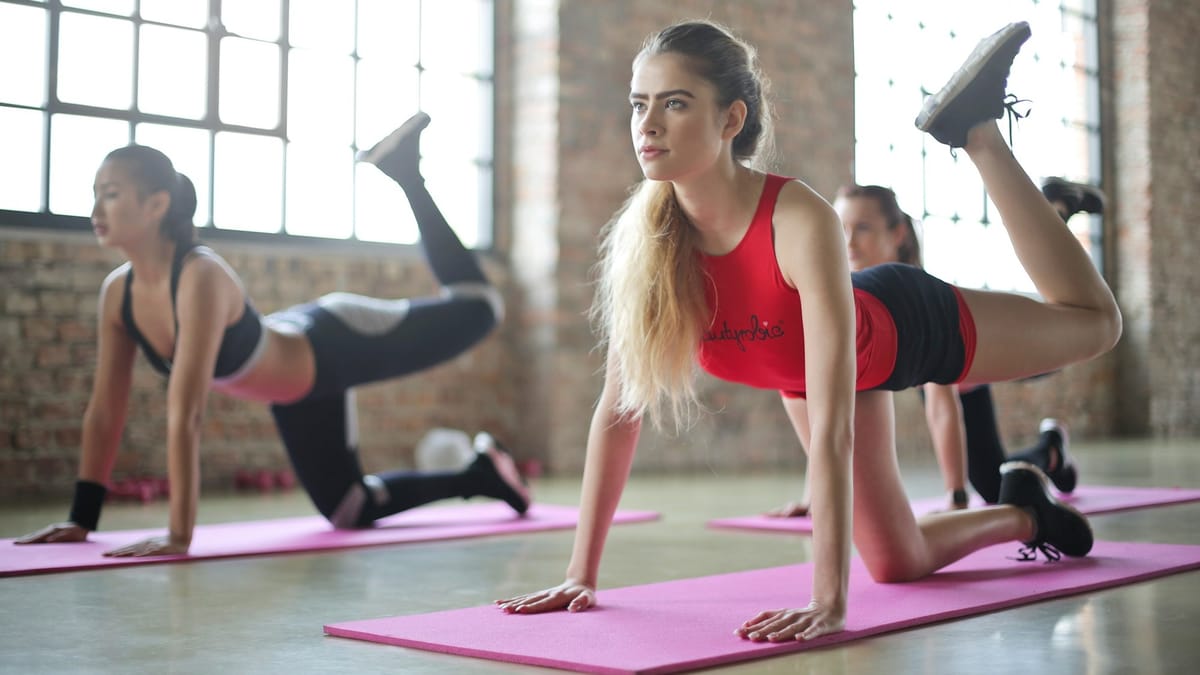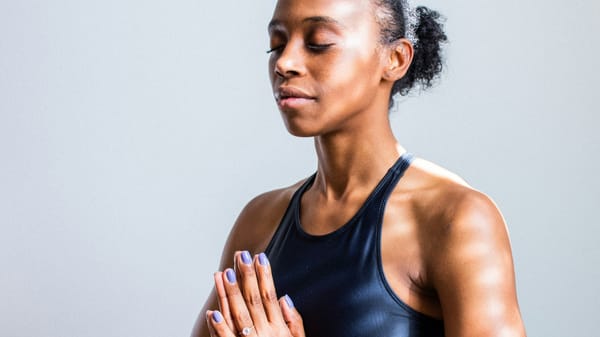Deskercise Essentials: Simple Moves to Boost Energy and Lower Stress—Anywhere
Evidence-based desk exercises, also known as "deskercises", bring movement right to the workplace, empowering anyone to fit bursts of activity into even the busiest schedule.

Imagine feeling more energized, focused, and stress-free—all without ever needing to leave your workspace.
Most people spend their days sitting at a desk, often glued to a screen, longing for just a little more energy, better concentration, and a way to beat the inevitable tension that creeps into their shoulders and back. But staying active doesn’t require leaving the office or carving out hours at the gym. Evidence-based desk exercises, also known as "deskercises", bring movement right to the workplace, empowering anyone to fit bursts of activity into even the busiest schedule.
This practical guide unpacks easy, science-backed movements anyone can do from a desk, chair, or small home office. These exercises are designed not only to improve posture and promote circulation but also to clear the mind and alleviate daily stress. Whether it’s two-minute neck and shoulder rolls, seated leg marches to activate core muscles, or standing transitions to burn more calories and relieve spinal pressure, each routine is adaptable from beginner to advanced.
With a special focus on overcoming common barriers like limited space and sedentary habits, this guide emphasizes that regular movement is for everyone, not just those working in corporate offices. The benefits extend beyond physical wellness, supporting mental clarity and providing powerful tools for stress management throughout the day. Plus, an included 10-minute routine means getting started is as simple as following a few steps, no matter where the day takes place.
Are you ready to make wellness a natural part of the workday? Read on to discover how small, mindful moments of movement can create lasting change.
Neck and Shoulder Rolls: A Simple Solution for Daily Relief
Neck and shoulder tension is a nearly universal side effect of modern work life, especially for those seated for hours at computers or hunched over mobile devices. But it takes just two minutes to reset, refresh, and relieve this built-up stiffness with neck and shoulder rolls, a foundational movement in any desk-friendly exercise toolkit. This section explores not only the “how” but, crucially, the “why”, revealing the science and practical benefits behind this deceptively simple exercise, along with beginner and advanced progressions and tips for incorporating stretches seamlessly into any routine.
Why Posture and Circulation Matter
Long periods of sitting cause significant strain on the muscles at the back of the neck and shoulders, slowing blood flow and setting the stage for chronic headaches, poor posture, and reduced focus. Even micro-breaks with targeted movement prompt the body’s circulatory system to deliver more oxygen to both muscles and brain, directly improving alertness and mental clarity while decreasing fatigue and discomfort. Research in occupational health repeatedly confirms that frequent, gentle stretches are among the most effective interventions for combatting the negative effects of sedentary habits, no equipment or gym gear required.
How to Do Neck and Shoulder Rolls
Performing neck and shoulder rolls at a desk is both intuitive and highly adaptable. Here’s how to maximize their benefit:
- Sit or stand tall with the spine neutral and shoulders relaxed.
- Begin with slow, gentle circles: roll the shoulders forward, upward, backward, and down, making each motion smooth and controlled.
- After 10-15 rolls, reverse direction.
- For the neck, gently lower the chin toward the chest, then roll the head slowly to each side, pausing briefly at each shoulder.
- Repeat four to six times, focusing on relaxed breathing.
- For an extra release, combine these movements with slow, deep inhales and complete exhales.
These stretches quickly relieve tension caused by repetitive stress and sub-optimal workstation setups and can be performed without interrupting workflow or drawing attention in shared spaces.
Beyond the Basics: Progressions
Once comfortable with the basics, further benefits can be achieved by adding gentle resistance:
- Hold a light object (like a water bottle) in each hand to increase activation during shoulder rolls.
- For deep neck stretches, use fingertips to apply light pressure just above the collarbone, intensifying the release.
- Alternate active rolls with static stretches—hold each tilt or roll position for 10 to 15 seconds before returning to center.
Advanced variations help those already managing tension or aiming to build even greater resilience to workplace discomfort.
The Science-Backed Payoff
Regular neck and shoulder rolls have benefits proven by research and echoed by physiotherapists:
- Reduced incidence of tension headaches and migraines.
- Improved posture by countering natural rounding of the upper back.
- Facilitated blood flow helps flush “stress” biochemicals, supporting elevated mood and endorphin production.
- Enhanced focus and productivity, as both mind and body feel more awake.
These effects extend beyond the workplace, providing benefits for anyone who spends extended time reading, driving, or engaging in any repetitive seated activity.
Making Desk Movement a Habit
The greatest challenge for most is not in the exercises themselves, but in consistently making them a part of the daily routine. Try setting reminders for short movement breaks every hour, prepping a playlist of brief stretching cues, or pairing desk exercise with actions like reading emails or making calls.
Consciously connecting a new movement habit to everyday tasks increases the likelihood that it will become automatic, helping to chip away at fatigue and discomfort before it builds up.
No matter the environment—corporate office, home workspace, or even a coffee shop corner—neck and shoulder rolls stand out as a simple practice that delivers immediate relief and long-term benefits. Introducing just two mindful minutes per day of this targeted movement can yield remarkable results in both physical comfort and mental performance. This foundational step lays the groundwork for more advanced routines and a truly holistic approach to workplace wellness.
Simple Desk Moves for Everyday Strength and Health
Seated Leg Marches: Improving Core Strength and Circulation
Seated leg marches are an easy exercise that can help build core strength and improve leg circulation, all without needing to stand up. This movement is practical for people who spend long periods at a desk, as it keeps the body engaged and prevents stiffness from setting in during the day.
- Sit upright in a chair with both feet flat on the floor.
- Engage the abdominal muscles and lift one knee toward the chest, then lower it back down.
- Alternate legs, creating a “marching” motion.
- Continue for 30 to 60 seconds, keeping the movements controlled.
- To add intensity, try the exercise for several rounds or add ankle weights.
The practical benefits include better circulation in the legs, which helps reduce the risk of blood pooling and discomfort from sitting, and activation of the hip flexors and lower abdominal muscles, important for posture and stability. These simple movements can be discretely included several times a day to maintain muscle engagement and provide a short energy boost. Research shows core strengthening at the desk reduces the risk of lower back pain and can improve focus and comfort over time.
Standing Desk Transitions: Benefits for Spine and Activity
Switching between sitting and standing throughout the workday helps to vary posture and support spine health. Standing desk transitions allow for greater calorie burn and can help maintain the spine’s natural alignment, which may reduce back discomfort in the long run.
- If using a height-adjustable desk, aim to switch from sitting to standing every 30 to 60 minutes.
- When standing, keep feet hip-width apart and weight evenly distributed.
- Gently shift weight or perform small calf raises to stay active.
- Alternate between sitting and standing several times a day, adjusting as comfort allows.
Benefits of regular transitions include activation of leg and postural muscles, support for circulation, and mild increases in energy expenditure compared to prolonged sitting. Over time, this approach is associated with improved posture, less stiffness, and support for maintaining a healthy metabolism.
Incorporating moves like seated marches and standing transitions helps break up sedentary routines, offering both immediate comfort and long-term wellness for office and remote workers alike.
5-Minute Desk Flow: Simple Moves for Stress Relief
Engaging in a short, guided desk exercise sequence can help counter the effects of prolonged sitting and support both physical and mental health. The "5-Minute Desk Flow" is designed to relieve tension, boost circulation, and foster a sense of calm, no special equipment needed. Incorporating breathing cues throughout the routine further enhances stress relief and focus, making every movement more effective.
5-Minute Desk Flow Sequence
- Neck and Shoulder Rolls: Start by rolling the shoulders with deep inhales and slow exhales, loosening tight muscles.
- Seated Leg Marches: Lift one knee at a time, alternating legs for 30 seconds. Inhale as the knee lifts, exhale as it lowers for steady rhythm.
- Chair Twists: With each inhale, sit tall and twist gently to each side, holding for a few seconds; exhale slowly as you return to center.
- Seated Toe Raises: Lift the toes and heels to activate lower legs. Match movement to your natural breath.
- Chest Opener Stretch: Clasp hands behind your back, open the chest and inhale deeply. Hold the stretch for 10–15 seconds, then slowly exhale.
Integrating simple, evidence-based exercises into the daily routine can significantly improve both physical comfort and mental clarity, especially for those spending extended periods at a desk. Practices such as neck and shoulder rolls, seated leg marches, and standing desk transitions are effective ways to enhance circulation, strengthen core and postural muscles, and support spine health without requiring special equipment or large spaces. The addition of mindful breathing during a short, 5-minute desk flow provides an accessible method to manage stress and maintain focus throughout the day.
These movements are designed to overcome common barriers like limited space and time constraints, making them accessible for a broad range of lifestyles beyond traditional office settings. Regularly incorporating these exercises can help reduce physical discomfort like back pain and muscle tension while also promoting holistic wellness by elevating endorphin levels and aiding mental well-being.
Ultimately, maintaining an active workday is about creating sustainable habits that fit easily into daily life. Encouraging movement not only benefits individual health but can also improve productivity and overall quality of work. Small, consistent efforts toward staying active during the day have the potential to make a meaningful difference in long-term health and stress management.
Fred's Small Steps Toward a Less Stiff Workday
Fred used to end his workdays with tight shoulders, a stiff neck, and a growing frustration about how little energy he had after sitting most of the day. Meetings, emails, and deadlines often kept him glued to his desk, leaving little room to move. Then one day, on the advice of a colleague, he started trying a simple routine: just a few minutes of neck and shoulder rolls, seated leg marches, and standing desk transitions spread through his day.
At first, it felt almost too simple to make a difference. But after a few days, Fred noticed he was less tense, especially in his neck, and even his back discomfort eased. The real change came unexpectedly, he found it easier to focus during long afternoons and felt less drained by the end of the day. Those small movements, combined with deep breaths, helped him reset without taking him away from his work.
Fred’s experience shows that making time for small, regular movements doesn’t require big changes or extra time but can have a lasting, positive impact on wellbeing. Sometimes, taking just a couple of minutes to care for the body at the desk is enough to change the day for the better. This simple shift made all the difference for Fred, and it can for anyone.
Your Top Questions Answered
- Why are desk exercises important?
Desk exercises help combat the negative effects of prolonged sitting by improving posture, increasing circulation, reducing muscle tension, and supporting mental clarity.
- What are neck and shoulder rolls good for?
Neck and shoulder rolls relieve tension in the upper body within minutes, helping to decrease discomfort and improve focus during the workday.
- How do seated leg marches benefit the body?
Seated leg marches build core strength and enhance leg circulation without needing to stand, which helps prevent stiffness and supports posture.
- Why should standing desk transitions be part of the routine?
Alternating between sitting and standing promotes spine health, engages muscles, and burns more calories throughout the day.
- Can breathing help during desk exercises?
Coordinating breath with movement enhances stress relief, supports relaxation, and improves concentration.
- How much time should be dedicated to desk exercises?
Even short sessions, such as a 5-minute desk flow routine, can provide effective stress relief and physical benefits.
- Are these exercises suitable for all ability levels?
Yes, exercises can be easily adapted for beginners to advanced levels and for different environments.
- How can desk exercises be incorporated into a busy day?
Setting reminders or pairing movements with daily tasks helps make exercise habitual and manageable.
- What are the long-term benefits of regular desk exercises?
Regular movement reduces back pain, stiffness, and fatigue, while improving overall wellness and productivity.
- How can sharing exercise routines help workplace wellness?
Sharing personal strategies motivates others, fosters community support, and sustains healthy habits.
Key Takeaways
- Desk exercises offer a practical way to combat the negative effects of prolonged sitting, helping to improve posture, circulation, and mental clarity.
- Neck and shoulder rolls relieve muscle tension in just a few minutes, supporting focus and reducing discomfort.
- Seated leg marches build core strength and enhance leg circulation without requiring standing or extra space.
- Regular standing desk transitions promote spine health, activate muscles, and increase daily calorie burn.
- Short exercise routines can be easily adapted for different ability levels and environments, making movement accessible to all.
- Coordinating breath with movement during desk exercises enhances stress relief and improves concentration.
- Incorporating a brief, 5-minute desk flow of movements with breathing cues can effectively manage daily stress.
- Making exercise a habit through reminders or pairing with daily tasks helps overcome barriers like time constraints and space limitations.
- Consistent inclusion of desk exercises supports holistic wellness, helping to reduce back pain, stiffness, and fatigue.
- Sharing personal routines and engaging with others about workplace wellness can motivate sustained movement habits and a healthier work culture.
References
https://pmc.ncbi.nlm.nih.gov/articles/PMC11241525/
https://pmc.ncbi.nlm.nih.gov/articles/PMC6696298/
https://www.healthline.com/health/deskercise
https://www.cetjournal.it/cet/24/111/101.pdf
https://pmc.ncbi.nlm.nih.gov/articles/PMC9883822/
https://vantagefit.io/en/blog/desk-exercises/
https://monark.com/blog/workplace-wellness
https://www.anywherefitness.ie/blog/5-minute-yoga-desk
https://www.hyperhealth.com.au/post/why-desk-workers-need-daily-seated-exercise-breaks
https://www.hingehealth.com/resources/articles/seated-marches/
https://www.nasa.gov/wp-content/uploads/2020/03/hq_deskfit_booklet_6.10.2020.pdf?emrc=30b8c0
https://www.clevelandclinic.org/health/desk-exercises
https://openup.com/blog/the-impact-of-employee-wellness-programs-on-absenteeism/
This article was written by Ariadna Paniagua, an experienced writer and editor for several institutions, papers, and websites.




